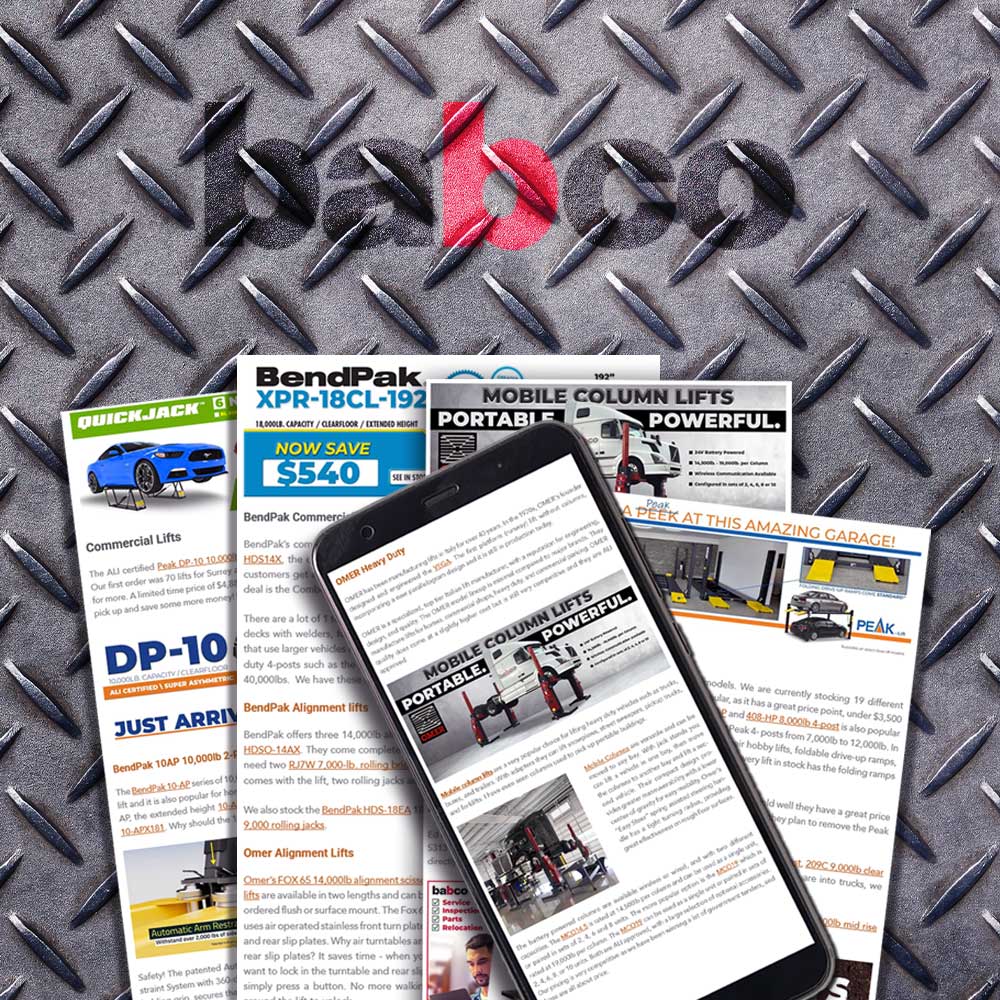Hobby / Residential Two-Post FAQ
Frequently Asked Questions
All cars and light trucks have approved lifting points that are specified by the vehicle manufacturer. It is critical that your vehicle is positioned properly relative to the centre line of the lift and centred between the columns. Cars that are front wheel drive and can be lifted asymmetrically. This allows the car to be positioned further back from the centre line of the lift. Often, a good rule of thumb is to start with the steering wheel lined up under the centre of the lift. When this is done, check the position of the four arms when they are extended to the recommended lifting points. The front lifting arm is manufactured on an angle and is considerably shorter than the rear arm, which will accommodate the asymmetric loading of your vehicle.
Yes . You just need to purchase the , std equalizer cables , Std length Safety cable, and the short version of the long hose.
No, you cannot install a two post lift on asphalt. Concrete must be a minimum of 4 -6" thick depending on capacity with a minimum rating of 3000 PSI.
Lifts can be installed but need to have the heating elements mapped so the bolts don't damage the heating system. We can help you find a suitable contractor to help in this regard.
Both BendPak and Peak offer a TURF Kit option for their 9-10K Capacity Lifts. The turf kit provides service on large fairway mowers to greens mowers, utility carts, sand groomers, fertilizer sprayers, golf and refreshment carts. Fully adjustable wheel span and fork assemblies fit a wide array of wheel arrangements.
1.Run the lift up and down a few times with no vehicle. 2.Lower arms to about 1 foot off the ground. 3.Slightly open the Allen bleeders on top of the cylinders, look for bubbles in the fluid. Once there are no more bubbles, close the Allen bleeders. This should take care of the issue.
1. Run the lift up and down a few times with no vehicle.
2. Lower arms to about 1 foot off the ground.
3. Slightly open the Allen bleeders on top of the cylinders, look for bubbles in the fluid. Once there are no more bubbles, close the Allen bleeders.
Yes you can, you would purchase an extension kit which would contain longer hydraulic hoses and cables.
We have different options to choose from depending on the weight capacity required, a sales rep would be happy to discuss options that suit your needs.
No. All 2 post lifts require anchoring. Talk to a sales representative about lift options that do not require anchoring.
We recommend frame cradle pads for added safety on all 2 post lifts
Frame cradle pads are recommended with 2 post lifts when working on any pickup truck or full frame vehicle. They act as a saddle for the frame rail and prevent the vehicle from sliding off the lift arms.
Symmetrical lifts have arms at the front and back that are the same length and design. Asymmetrical lifts have arms at the front and back that are different. This allows better access to the interior of the vehicle that is being worked on as well as better balance for different vehicles.
80-100 ft/lbs is sufficient and should be checked at regular service intervals.
Clear Floor models have the cables running over head giving a smooth floor under the lift making it easier to work under the car and roll tool boxes and transmission jacks under the car when working on it. Floor Plate models have the cables running under a cover on the floor giving more height for tall vans and the like. They both work well in different situations. Your sales professional can go over all of the details and find the perfect solution for your needs.
It's located inside the carriage about 18” down from the top of the carriage.
If you've got a heavy vehicle to lift, especially a truck, then you're going to want a set of cradle pads. Sturdy steel construction keeps the frame firmly between the cradle, while the treaded rubber mats protect the finish and reduce the chance of slippage.


